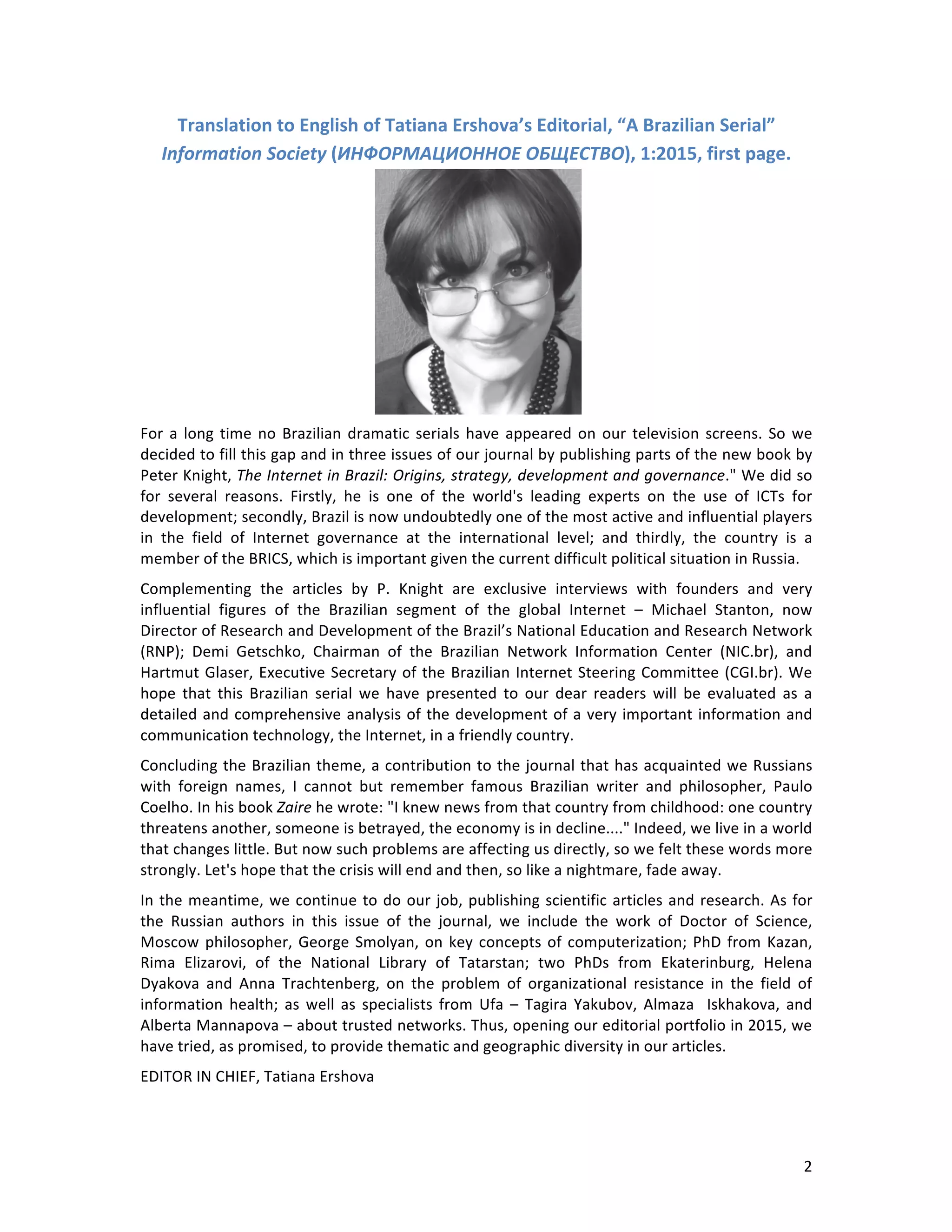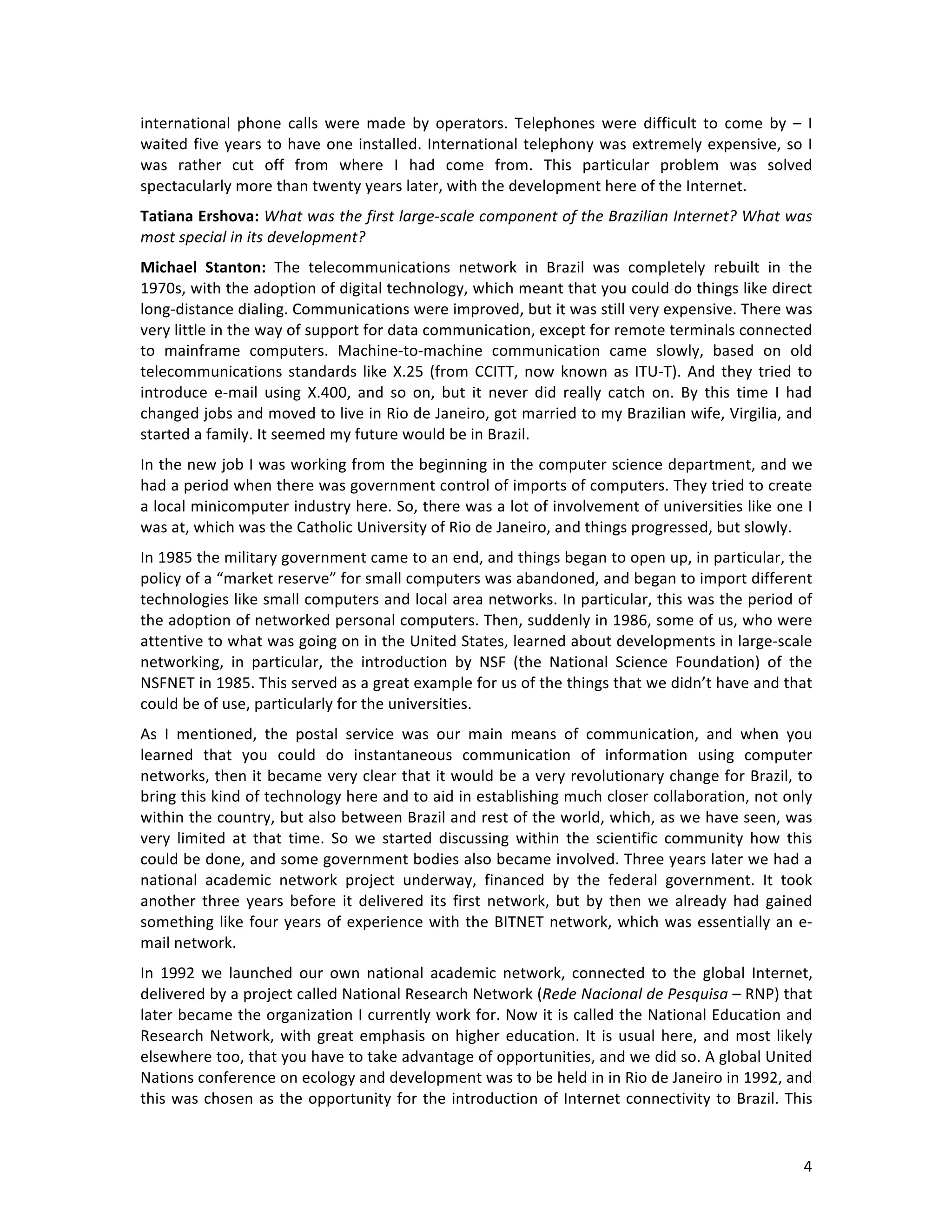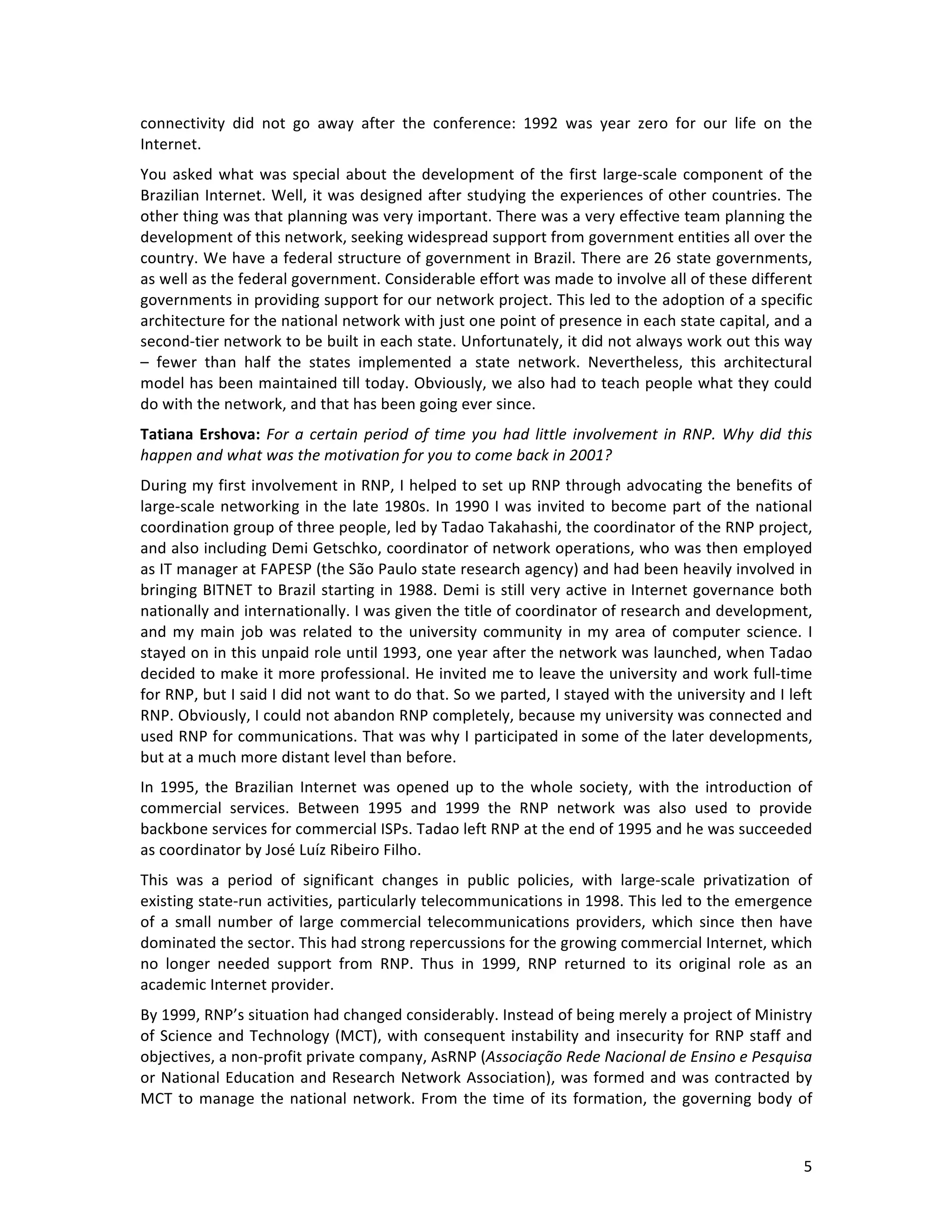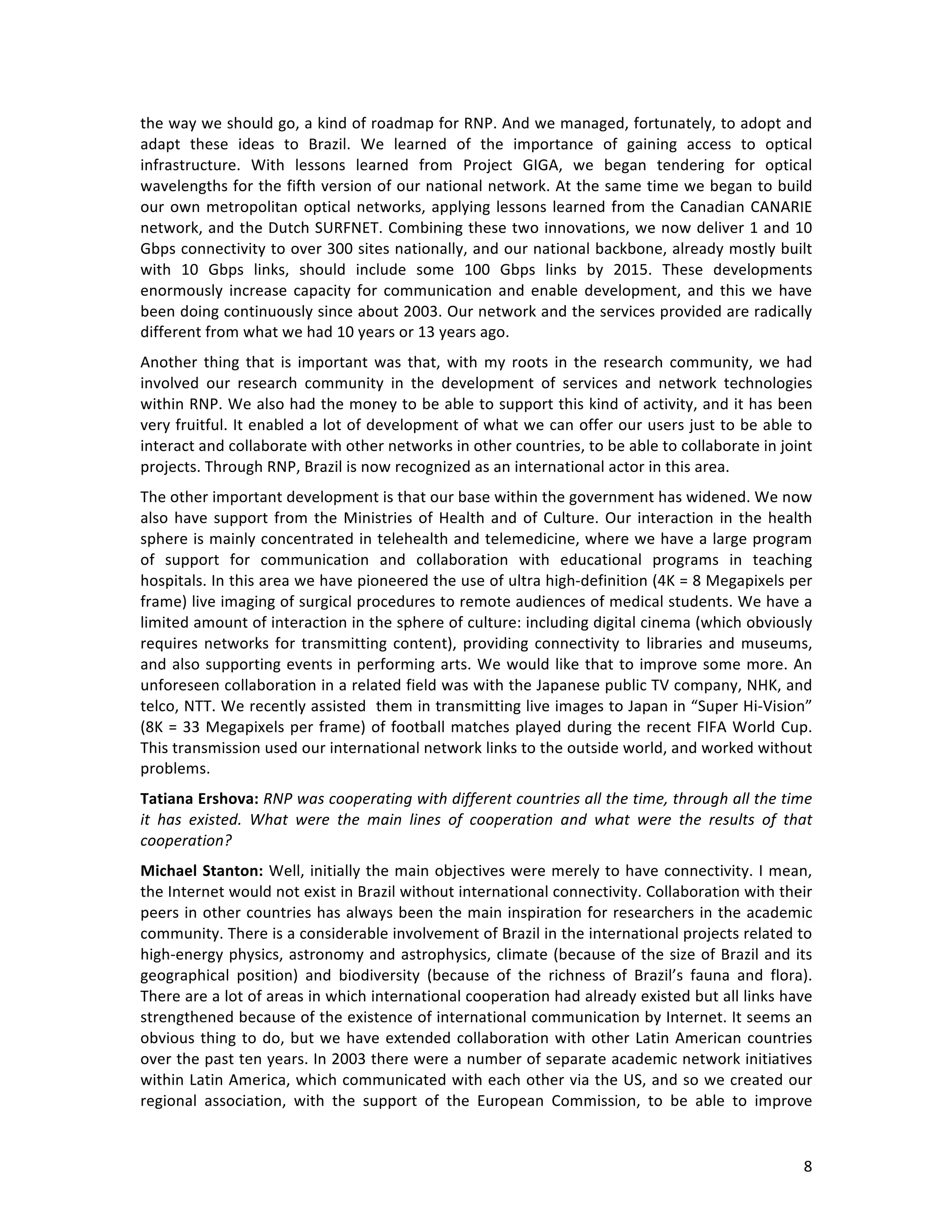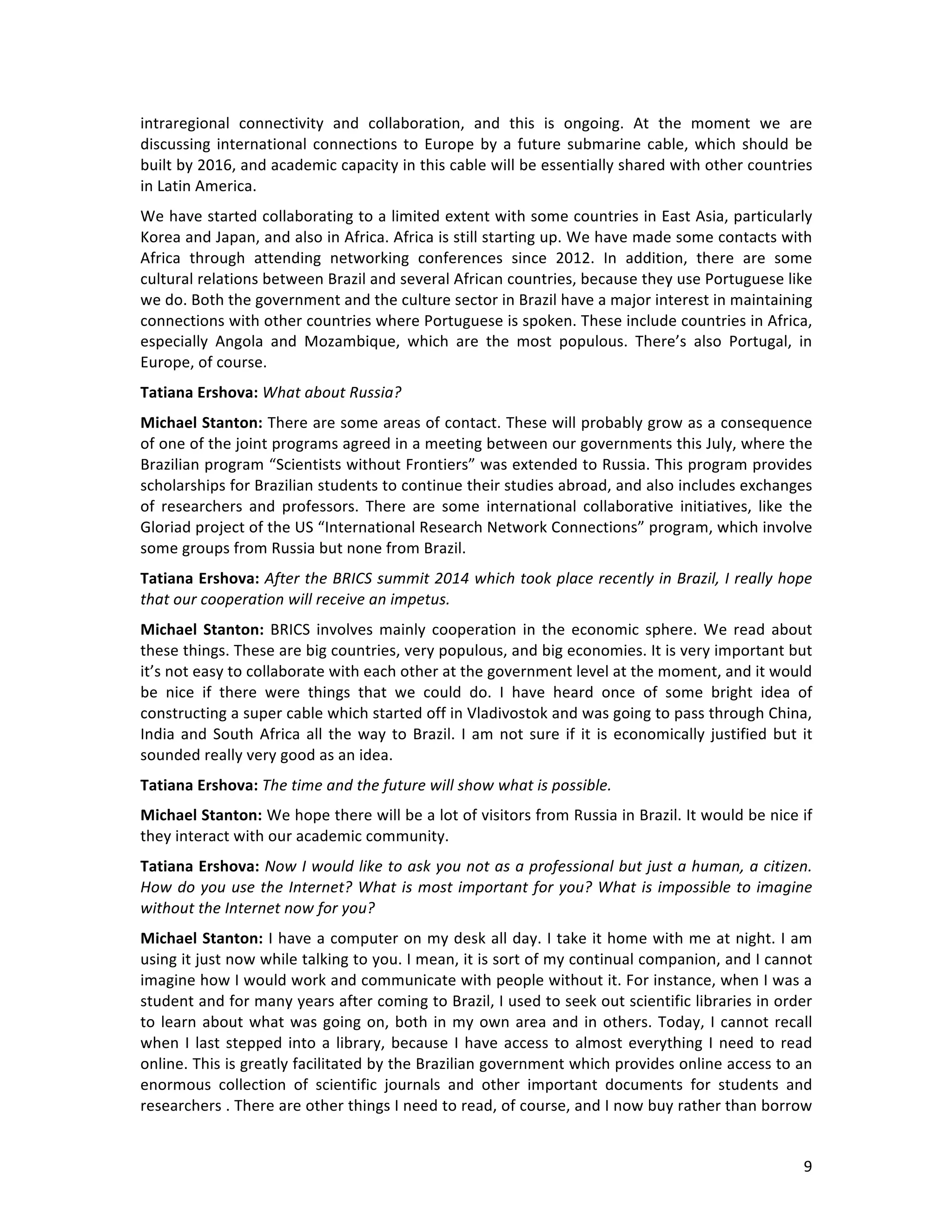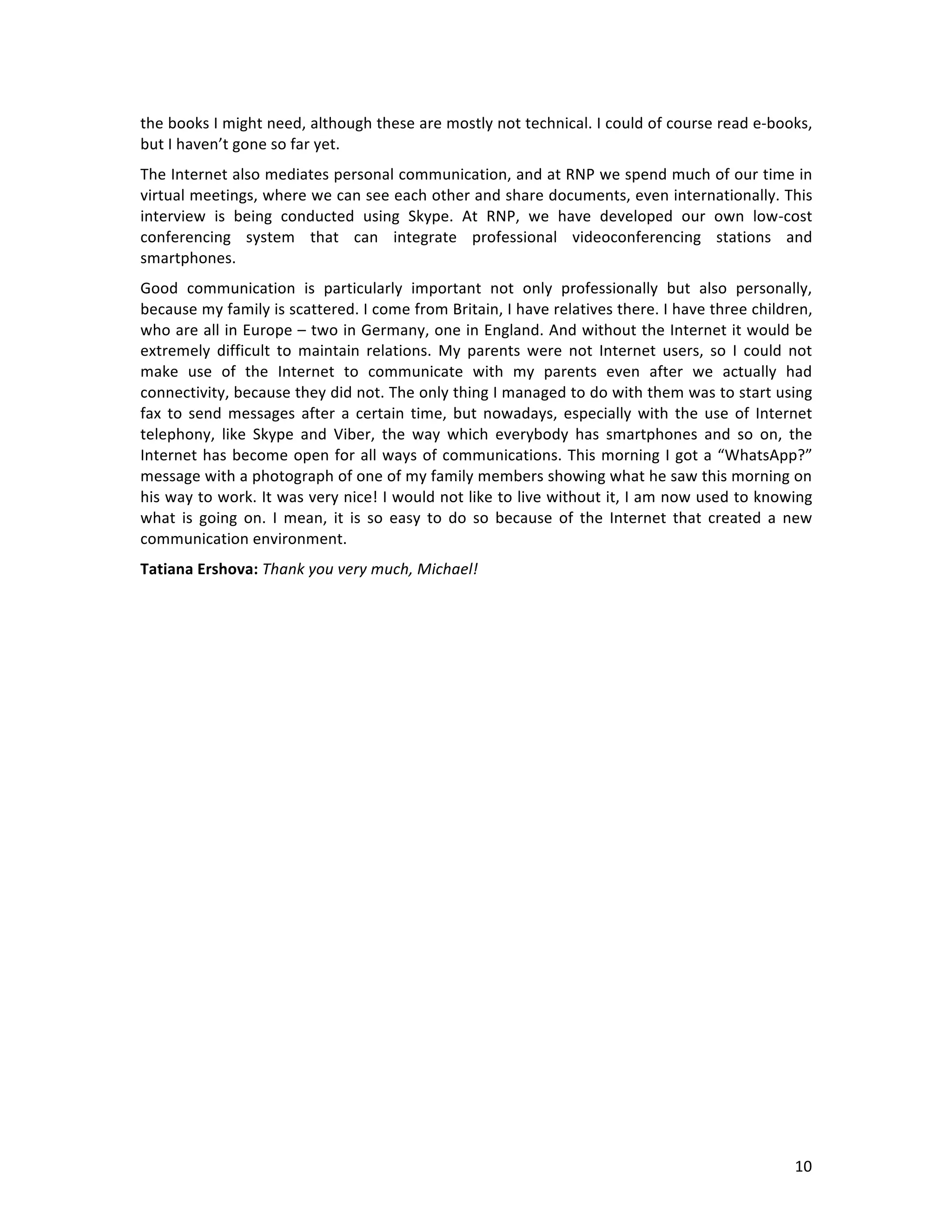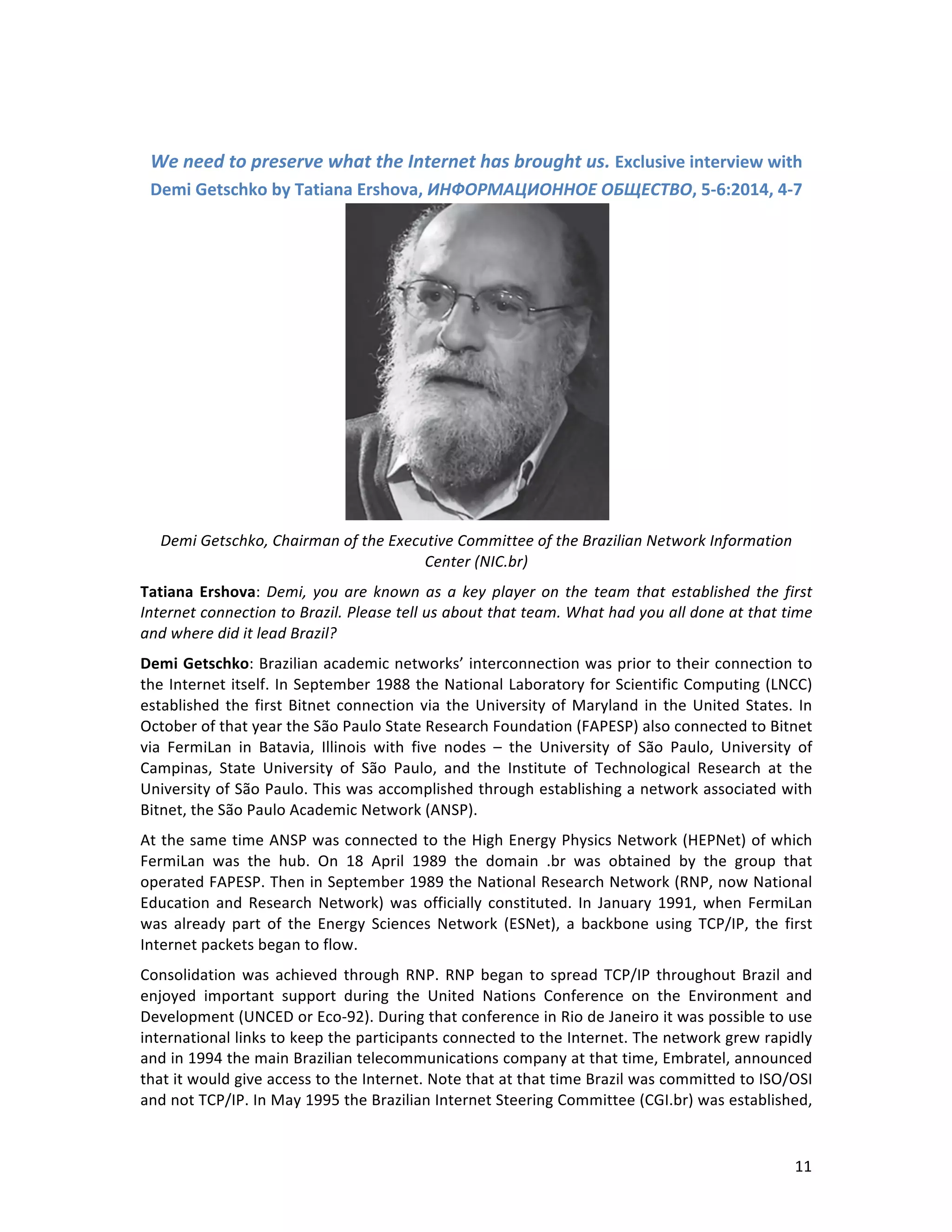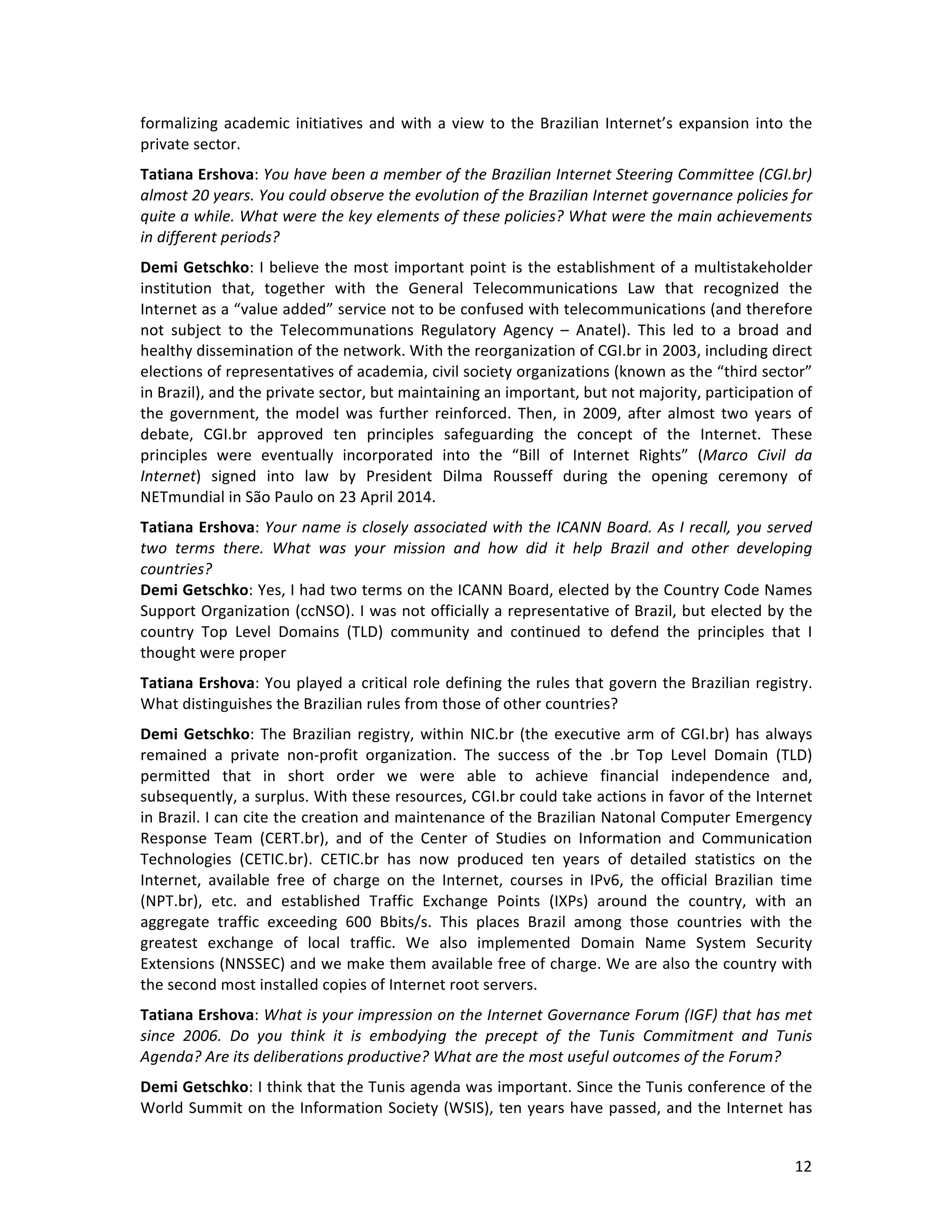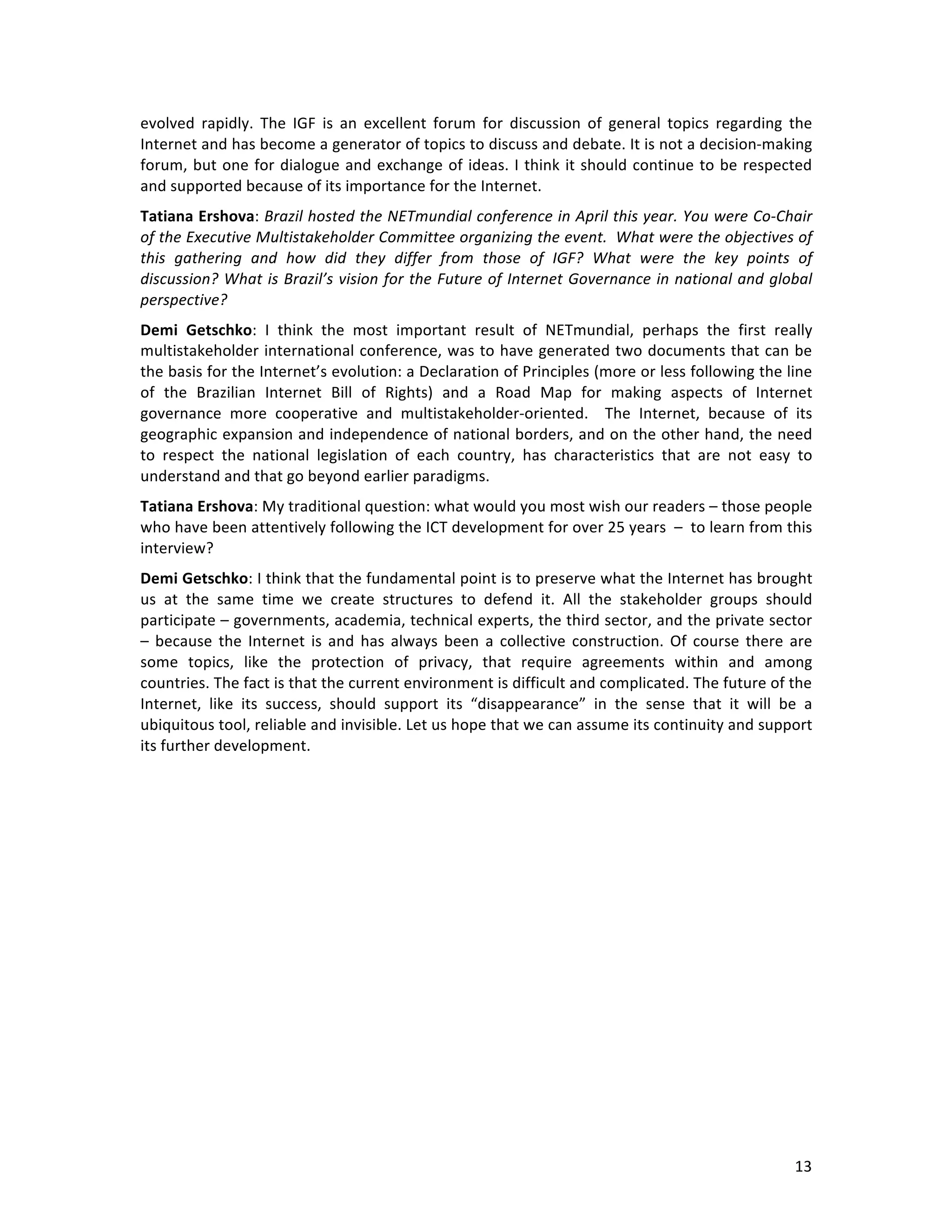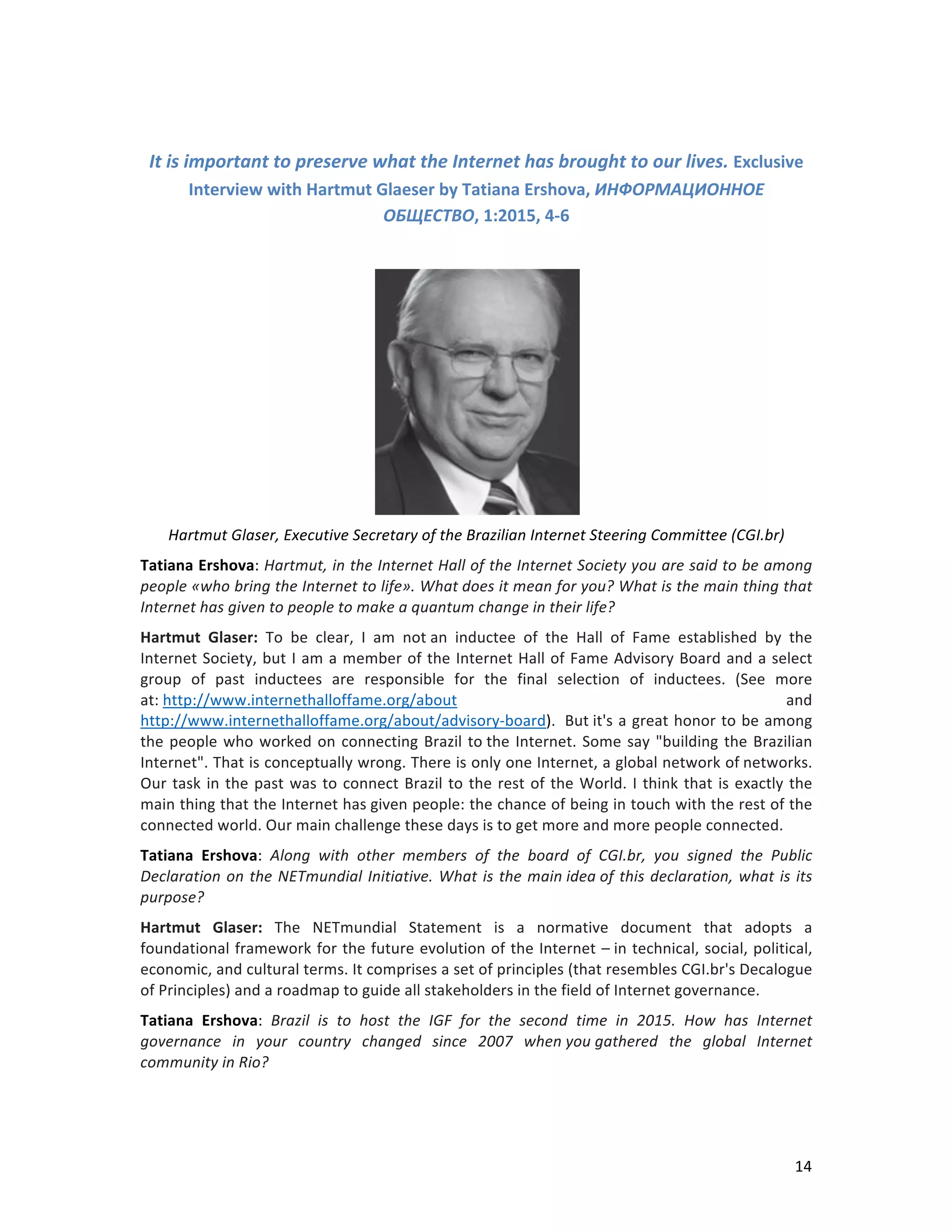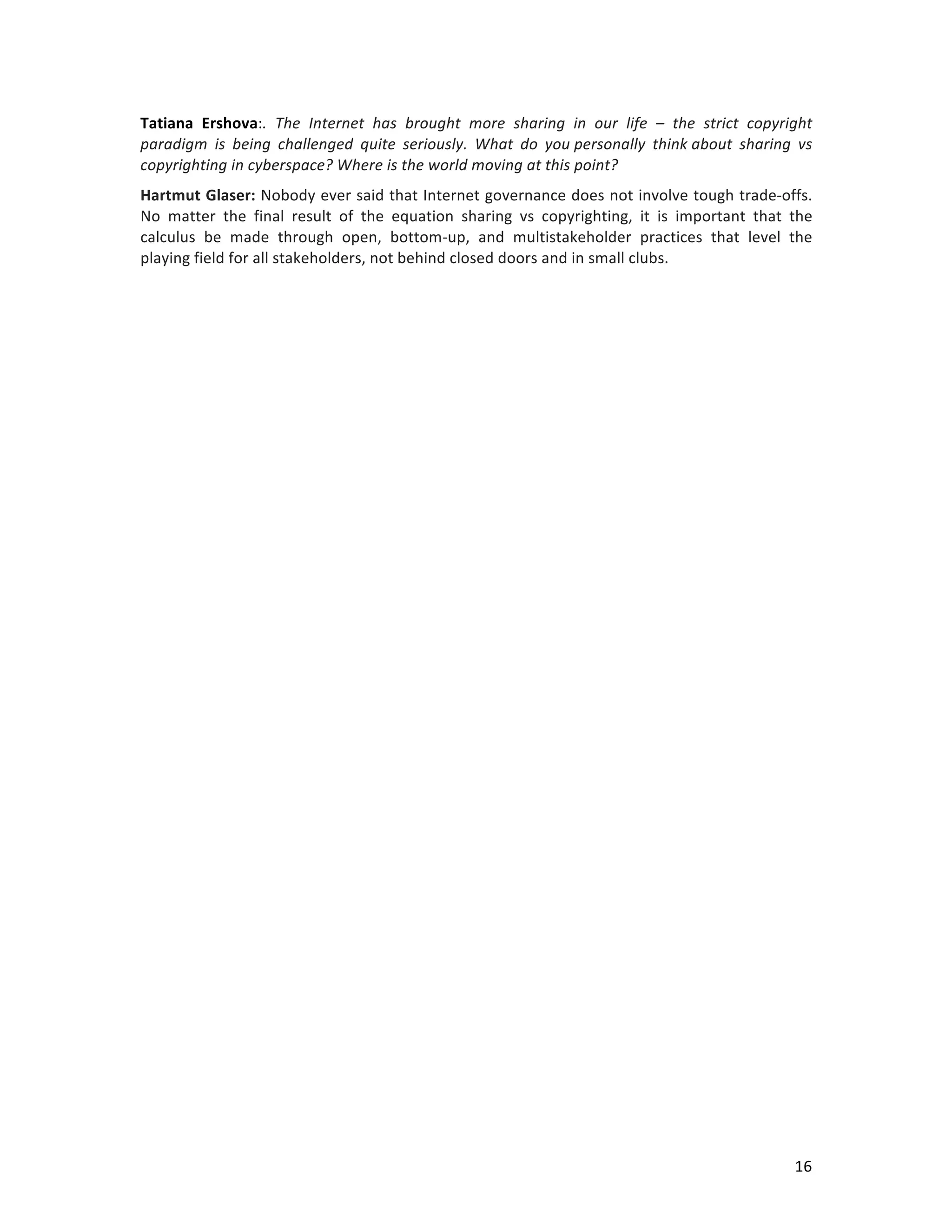This document contains an editorial and interviews from a Russian journal on the development of the internet in Brazil. The editorial introduces articles from an expert on ICT for development about the origins and governance of the internet in Brazil. It also presents exclusive interviews with three influential figures in Brazil's internet sector: Michael Stanton, Demi Getschko, and Hartmut Glaeser. The purpose is to provide a comprehensive analysis of how the internet has developed in Brazil, an important player in global internet governance.

